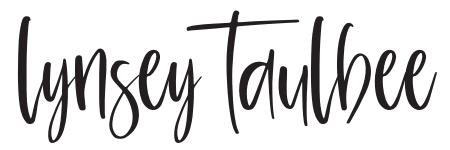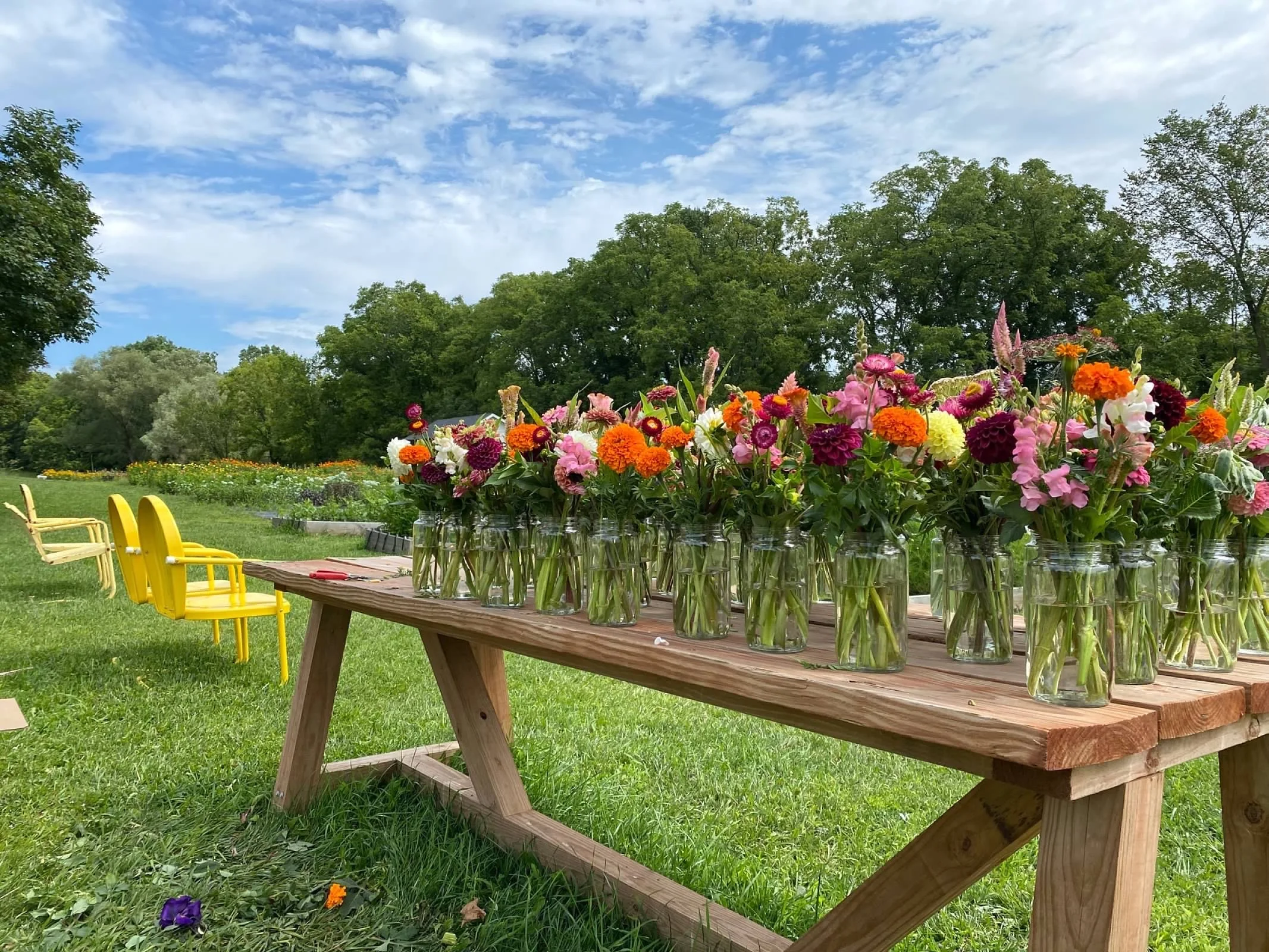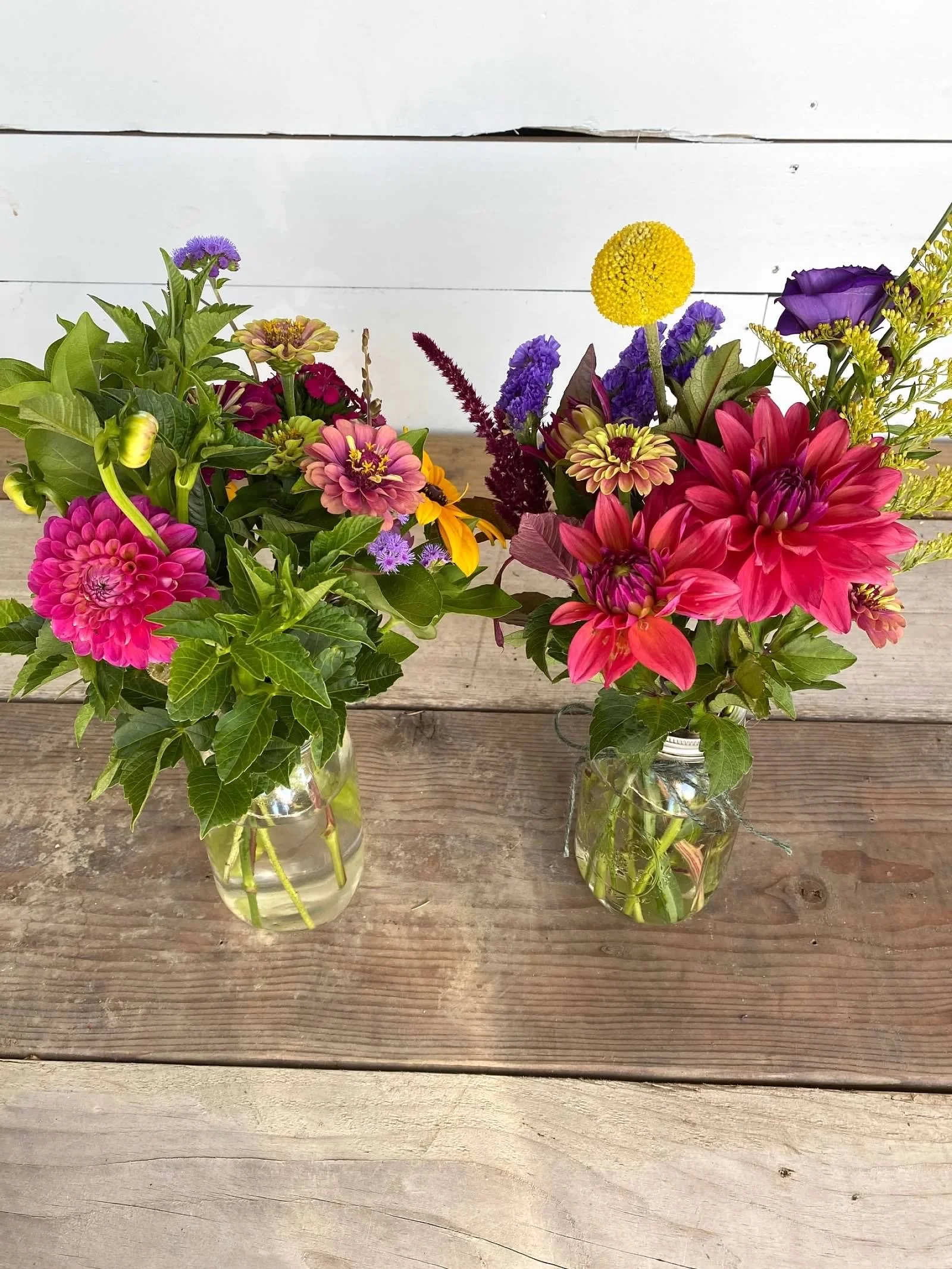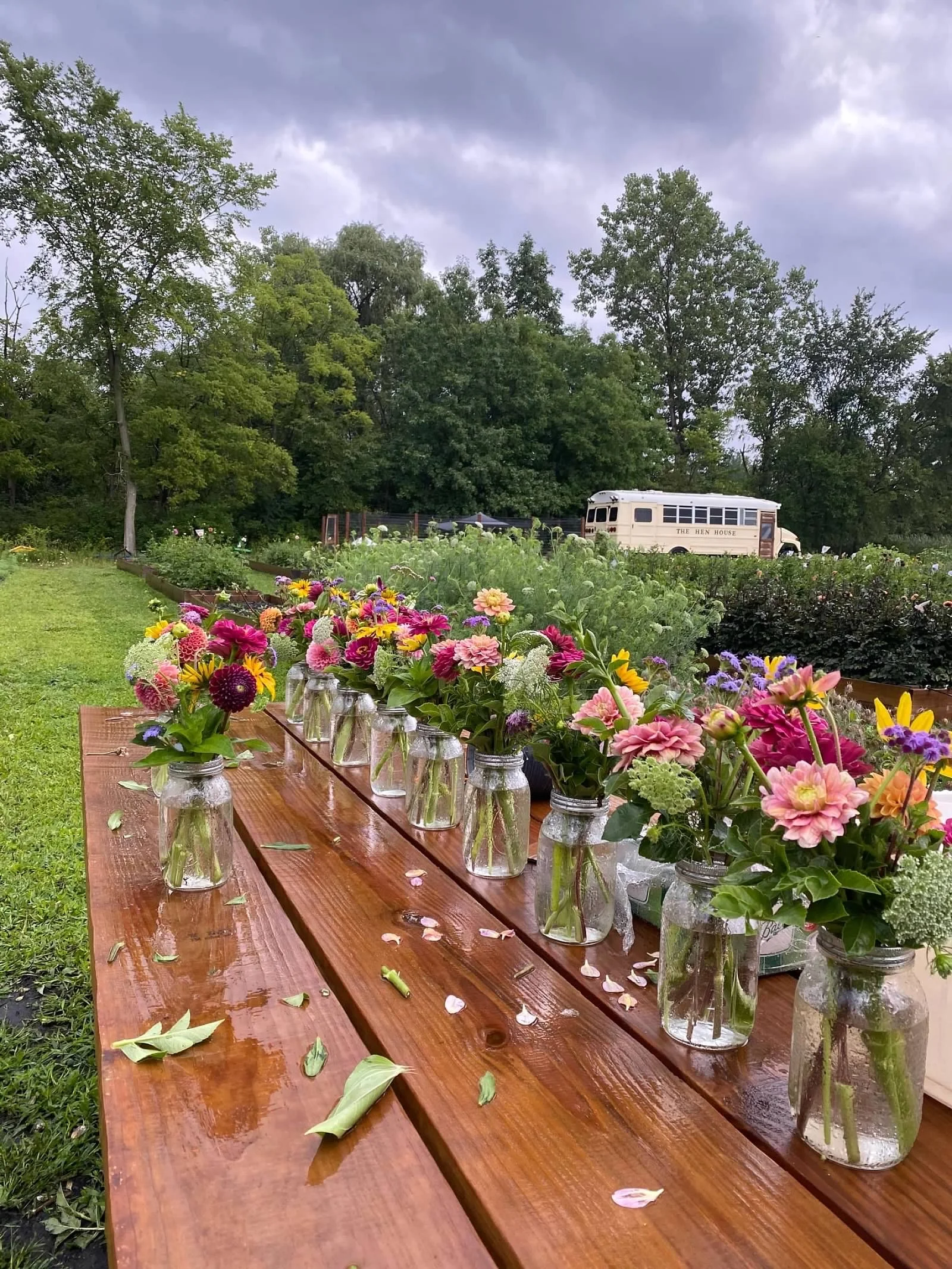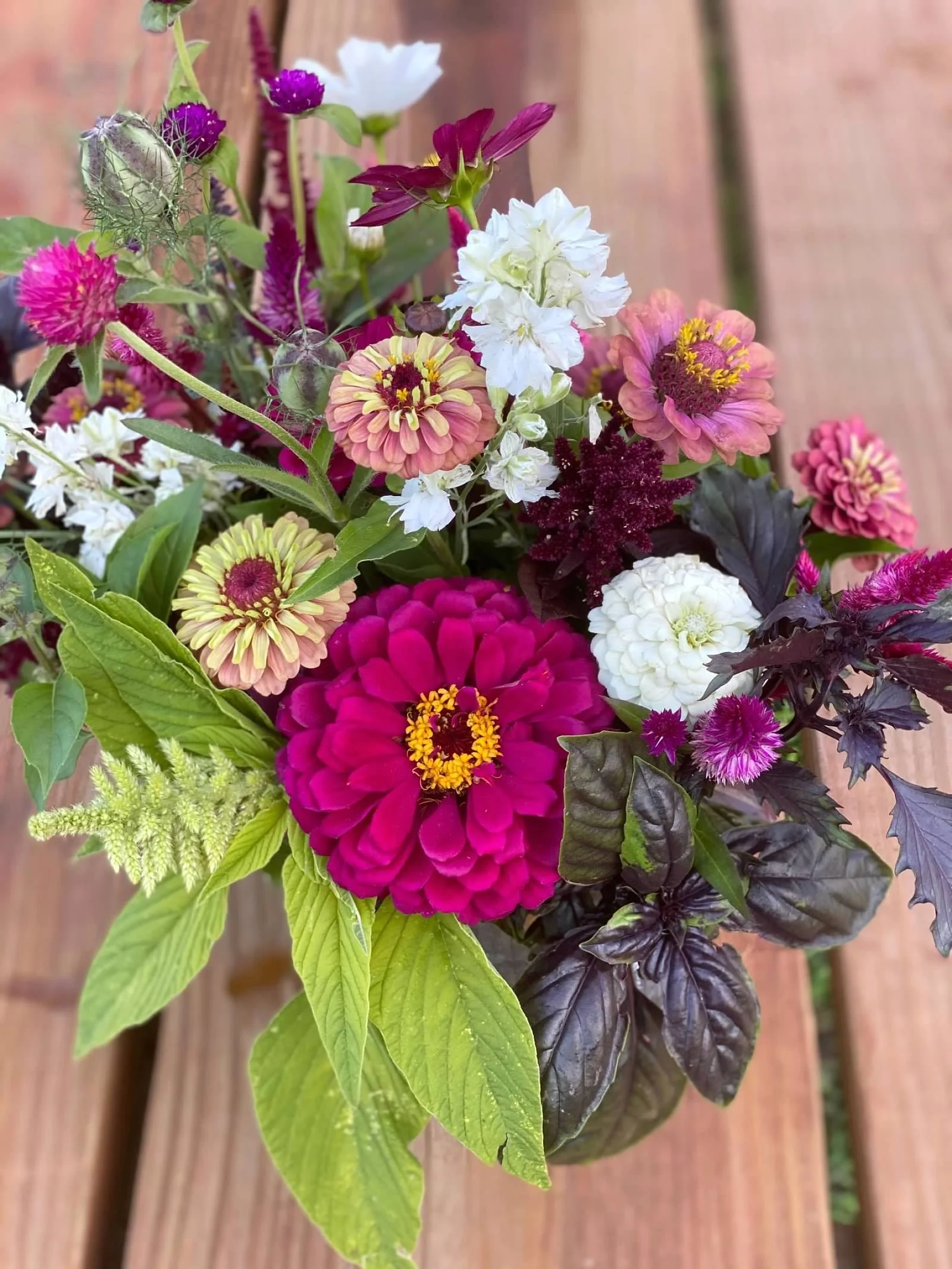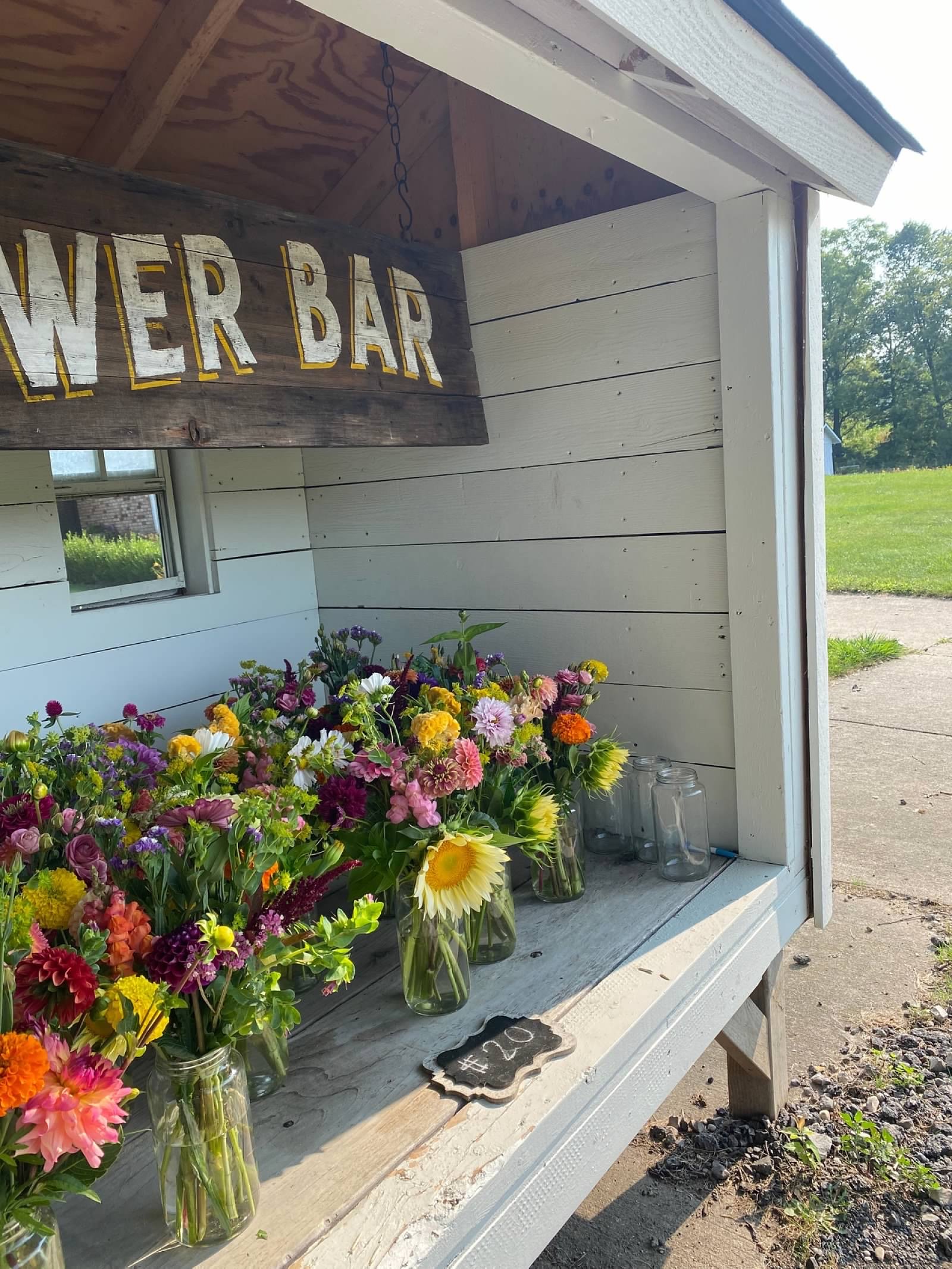3 Pricing Stories New Cut Flower Growers Fall For (And What to Do Instead)
You fell in love with growing flowers.
Maybe it started as a backyard project, a way to get your hands in the soil and bring some beauty into your life. And now—after a season of blooms and more bouquets than your kitchen table can hold—you’re wondering if you could actually sell a few.
But then the question hits: What in the world do I charge?
Whether you’re testing the waters with a few weekend sales or dreaming of turning this into something bigger, pricing is often the thing that stops growers in their tracks. You don’t want to overcharge. You don’t want to undercharge. And you definitely don’t want to look like you don’t know what you’re doing.
You’re not alone. This is the sticking point for so many flower lovers who are ready to take the next step.
The problem isn’t your flowers. It’s the stories (aka lies) you’re telling yourself.
Let’s dismantle the three biggest lies that are keeping you stuck and undercharging, so you can finally feel confident selling what you grow.
Story #1: “I Should Price Low to Start"
This is the most dangerous myth of all.
Maybe it sounds like:
“My flowers aren’t perfect yet.”
“I don’t want to scare people away.”
“I’m new, so I need to charge less until I’m ‘good enough.’”
It feels humble. Reasonable, even. You’re trying to build trust, attract your first customers, and make people happy.
But here’s the uncomfortable truth: Underpricing doesn’t build trust. It erodes it.
When you price low, people assume something’s wrong. They don’t think, “What a deal!” They think, “Why is this so cheap?”
Study after study shows that consumers associate price with quality. It’s human nature. If you're charging less than the going rate, potential customers may assume your flowers are inferior—even if they're the most incredible blooms on the block.
Even worse? The people who are attracted to a bargain are often the hardest to please and the least loyal. They’ll haggle over a dollar and disappear the moment someone else offers a better deal.
Pricing low to “start out” often becomes a habit. And once you’re known for being cheap, raising prices is even harder.
So here’s your permission slip: Start with pricing that sustains you—not pricing that simply gets you by.
Story #2: “I Can’t Charge More Than Grocery Store Prices”
Here’s what I hear all the time: “The grocery store down the road sells flowers for $12.99. How can I compete with that?”
Let’s get one thing straight: you’re not selling the same product. Not even close.
Grocery store flowers are mass-produced overseas in chemical-laden fields, harvested long before they bloom so they can survive the long haul in refrigerated trucks.
Your flowers? They’re personal. They’re local. They’re fresh.
This isn’t fast food vs. fine dining—it’s more like comparing a gas station microwave burrito to a homemade meal made with fresh, local ingredients. Same category. Totally different product.
Here’s the truth the grocery store doesn’t want you to know: People will pay more for local flowers.
According to the 2023 Slow Flowers report, 62% of customers are willing to pay 15–30% more for locally grown blooms. Why? Because your flowers come with a story—one they want to be part of.
When you underprice, you’re unintentionally turning away the very customers who are looking for something meaningful. You’re trying to appeal to everyone—and ending up with bargain hunters who don’t value what actually makes your flowers different.
Price like the commodity you think you’re competing with, and you’ll be treated like one. Price like the creative you are, and you’ll attract people who see—and are happy to pay for—the difference.
Story #3: “I’ll Just Copy What Other Growers Charge”
We’ve all done it.
You see another grower’s bouquet on Instagram and instinctively zoom in to count the stems. Then you’re clicking through their website, taking notes on prices, maybe even dropping a question in a Facebook group: “What would you charge for this?”
And before you know it, you're plugging their numbers into your own business.
“If it works for them,” you reason, “it’ll work for me.”
But here’s the part we often forget: You’re only seeing a tiny sliver of their business. You don’t know if they own their land or if their family pitches in for free. You don’t know if they’re paying themselves a livable wage—or anything at all. You don’t know whether they sell wholesale to florists or offer high-touch customer service with every bouquet. You don’t know if this is their full-time income or a weekend side hustle.
And none of those details are minor. They shape everything about a grower’s pricing decisions.
Just because someone else is charging $25 for a bouquet doesn’t mean that’s what you should charge. They might be scraping by. Or barely covering costs. Or simply not thinking long-term.
You’re building a different business. You have different expenses, different values, and a different vision for what success looks like. Your pricing should reflect that.
Yes, study your market. Be aware of what others are charging. But don’t let someone else’s numbers become your business strategy.
When you stop copying and start calculating—when you price based on your actual costs, your brand, and your customers—you take back control.
You Deserve to Be Paid Well for Your Flowers
If any of these pricing stories have been echoing in your head, you’re not alone—and you’re not doing it wrong. You’ve just been trying to build something meaningful on top of some shaky pricing myths.
That’s why I created a free pricing series to help you get clear on what your pricing should actually look like—based on real numbers and market insight, not emotion or comparison traps.
We’ll walk through how to research your market, where your product fits, how to factor in your costs, and what industry benchmarks can tell you—so you can make pricing decisions that feel solid and sustainable.
If you’ve ever wondered:
• “How do I figure out what to charge?”
• “Where do I fit in the market?”
• “Am I forgetting something important?”
This series will give you the clarity and confidence to move forward.
👉 [Click here to join the series] and learn how to price your flowers with purpose—not guesswork.
